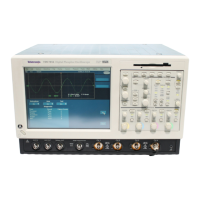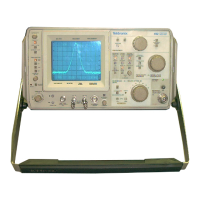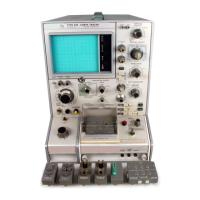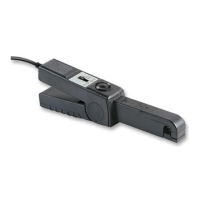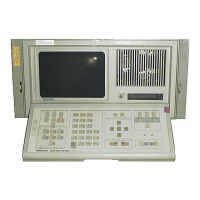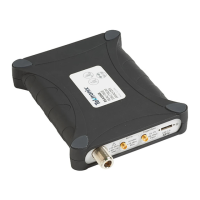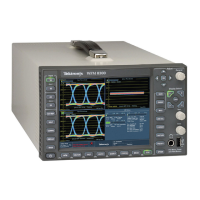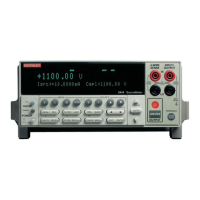Acquiring Waveforms
3-36
CSA7000B Series & TDS7000B Series Instruments User Manual
While sampling on the input signal provides the data that makes up the
waveform record for any given channel, the instrument builds the waveform
record through use of some common parameters (common means that they affect
the waveforms in all channels).
Figure 3--10 shows how these common parameters define the waveform record;
as shown in the figure, they define where in the data stream and how much data
is taken. Locate the following parameters in the figure:
H Sample Interval. The time between sample points taken during acquisition.
H Record Length. The number of samples required to fill a waveform record.
H Trigger Point. The trigger point marks the time zero in a waveform record.
All waveform samples are located in time with respect to the trigger point.
H Horizontal Position. If horizontal delay is off, the time lapse from the first
sample taken (first point in the waveform record) to the trigger point (in
percent of samples before the trigger). When horizontal delay is off, the
trigger point and the horizontal reference are at the same point in the
waveform record.
Sample interval
First sampled and digitized
point in record
Horizontal reference
Trigger point
Horizontal delay
Record length
Horizontal position
Figure 3- 10: The waveform record and its defining parameters
As Figure 3--10 shows, the instrument acquires points in order from left to right.
When all the points in the waveform record have been sampled and digitized, the
waveform record is in acquisition memory and becomes available for display (or
use in math waveforms, storage, and so on).
For a control-oriented discussion of the waveform record, see Horizontal
Acquisition Window Considerations on page 3--20 and Horizontal Scale vs.
Record Length vs. Sample Interval vs. Resolution on page 3--21.
Waveform Record
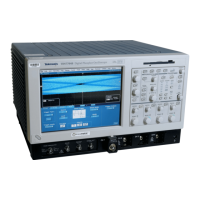
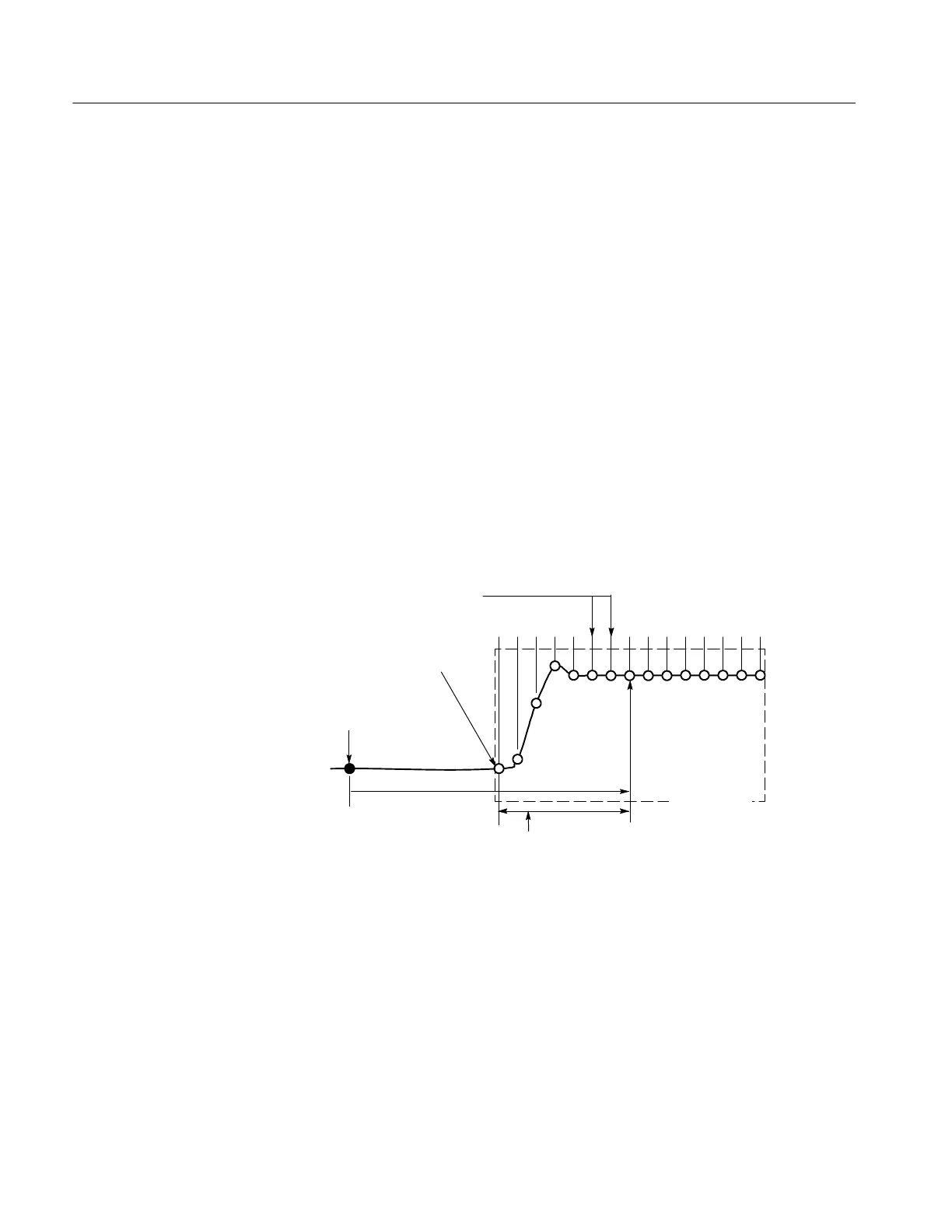